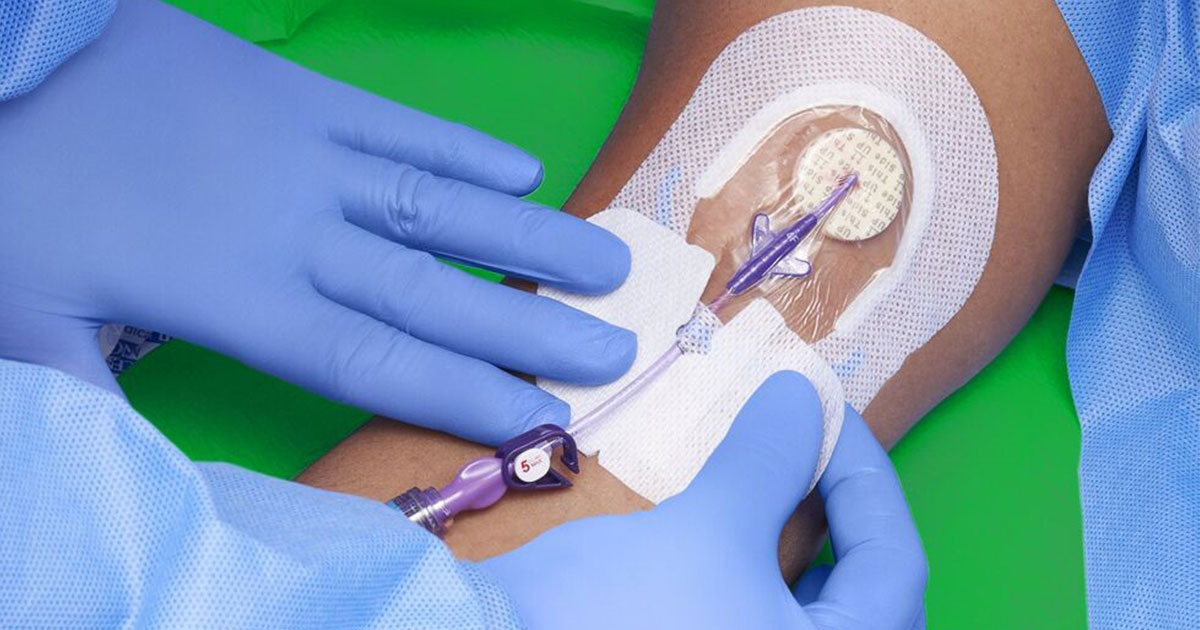High CLABSI rates: How do we move the needle?

By Medline Newsroom Staff | June 8, 2023
Healthcare-associated infections (HAIs) spiked during COVID-19 and remain high, according to new Hospital Safety Grade data from The Leapfrog Group, with central line-associated bloodstream infections (CLABSIs) showing the greatest increase—60% in late 2021 and 2022, compared with data obtained before the pandemic.
CLABSIs are linked to a 2.27-fold increased risk for mortality and greater health costs, according to the Association for Professionals in Infection Control and Epidemiology. The good news is that the U.S. Centers for Disease Control and Prevention say up to 70% of CLABSIs are preventable when readily available, evidence-based strategies are implemented.
So how can healthcare systems start to move the needle?
‘Show a little grace’ and focus on the future
“First, I think we have to show a little grace,” said Donna Matocha, DNP, MSN, RN, CNRN, VA-BC, Medline manager of clinical services, as high HAIs, and CLABSI rates in particular, reflect rapidly changing infection control restrictions during the pandemic, ongoing staff shortages and turnover, and the burden of caring for so many sick patients, all in need of central lines.
“Care changed during this time,” she said, and “the ability to standardize was lost, because you had new people coming in and leaving so quickly. That burden on healthcare systems was huge, and hospitals haven’t fully recovered. They’re still trying to dig out of it.”
Matocha says healthcare systems need to focus on the future to lower CLABSI rates. “We can’t worry anymore about what happened; we need to move forward and fix our CLABSI problem. We know what works. It worked before. Let’s identify what our individual issues are and start fixing them. And then we’ll start to move the needle down.”
Follow a process improvement strategy
“Look at your last five CLABSIs,” Matocha says. “Where are the infections coming from? Did they occur during catheter insertion, maintenance or removal? If its maintenance, is the problem hand washing? Do we need better scrubbing?
“We can’t worry anymore about what happened; we need to move forward and fix our CLABSI problem. We know what works. It worked before.”

Donna Matocha, DNP, MSN, RN, CNRN, VA-BC
Medline manager of clinical services
“You need to follow your process improvement strategy,” she says. “Do a root cause analysis, and start focusing on those key elements that pertain to why you’re having infections,” she continued.
To help busy clinicians, Medline has assembled a CLABSI prevention checklist that includes “helpful tips” and CDC recommendations. The checklist promotes “bundling” —a small, straightforward set of evidence-based practices, generally three to five, that when performed collectively and reliably, have been proven to improve patient outcomes, according to the Institute for Healthcare Improvement.

Medline’s Contour SorbaView SHIELD Integrated Securement Dressing
Bundling also is a key component of Medline’s Vascular Access Health Solution, offering best practice guidance, education and training, and intuitively designed products to manage the life of a line —from insertion through removal. In addition, Medline clinical staff offer on-site assessments of practices to help healthcare systems identify the source of CLABSIs, and to develop training and other strategies for limiting infections.
Learn more about how Medline is helping to empower clinicians to standardize practices to prevent CLABSIs
Read the related Medline Insights and Strategies article: Central line bundle use: Share this checklist with your tea
Medline Newsroom Staff
Medline Newsroom Staff
Medline's newsroom staff researches and reports on the latest news and trends in healthcare.


